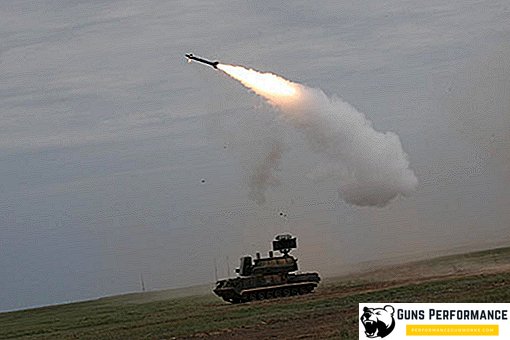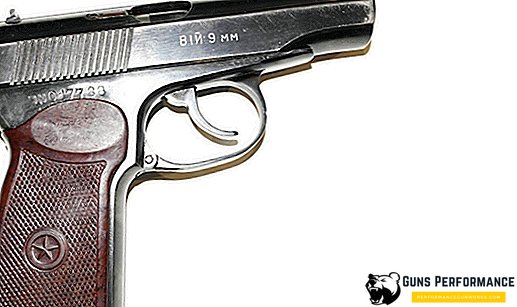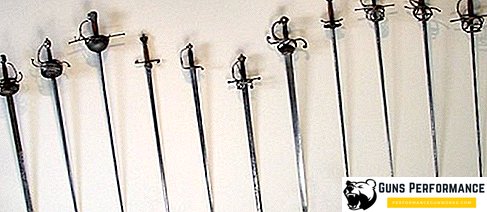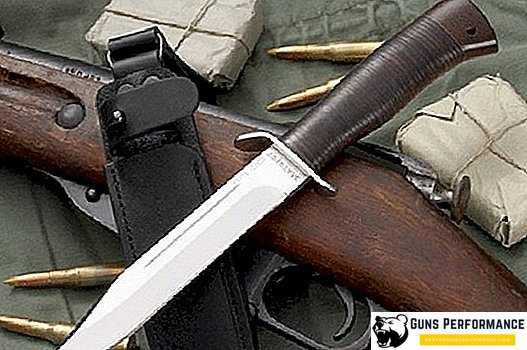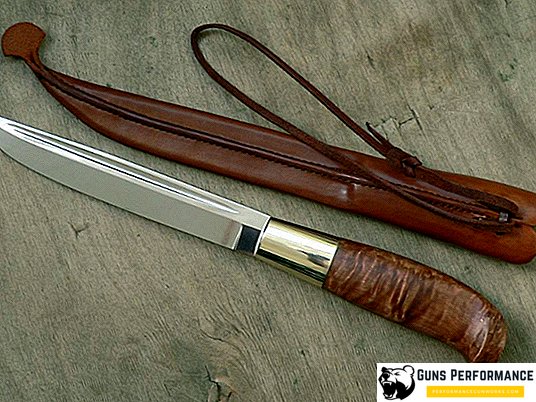
Simple Finnish knives, which are famous for their versatility, in the CIS countries are known as "Finca". For many decades, the Finns were considered combat knives, which only criminals skillfully owned. In fact, the traditional Finnish knife puukko has nothing to do with the products of Russian craftsmen who flooded Russia after World War II.
The history of classic and traditional knives of pre-revolutionary Finland

Before Finland fell under the power of the Russian Empire, it belonged to Sweden. Not surprisingly, the traditional Swedish and Finnish knives have many similarities.
Finnish knives of puukko appear for the first time in the Bronze Age, and even before that bone knives of a similar shape had been encountered. The word puukko means "a knife with a wooden handle," and all other theories about the origin of this word are nothing more than fiction. The word puukkojunkkari, which means the plotter, appeared precisely because of puukko, and not vice versa.
The authorities of Sweden, and later of the Russian Empire, tried to disarm the Finns as much as possible, since the accumulation of a large number of weapons, and even more so the development of national knife traditions, was completely useless. However, traditional knives, which were more likely economic tools, they could not ban, so in the 18th century there were many types of knife puukko, which the locals have learned to masterly master.
In the 18th and 19th centuries, the people's liberation movement gained strength in Finland, the participants of which were experienced knife fighters. Since these were the sons of wealthy farm owners, their knives were made of better steel and had handles.
At the beginning of the 20th century, Russian hunters began to be seriously interested in Finnish knives, which were most common among the indigenous people of Finland. Russian masters began to copy the puukko, and the copies were made according to the drawings and had the same dimensions and appearance. The knives of the master Lisakki Järvenpää were specially supplied for the imperial palace.
Features of the national knife puukko

Since up to the beginning of the 20th century, Finland was an agrarian country, the knives of the local population were distinguished by simplicity and versatility. Traditional Finnish knives may have different designs, but their common features are always the same:
- Straight butt-free blade with Scandinavian descents;
- The length of the blade was about 10-15 cm, usually about 12-13 cm;
- The handle was made of Karelian birch. In addition to the external attractiveness of this material, wooden handles did not cool the hand in winter. The tree that was used for the handles was soaked through with oil;
- Traditional Finnish knives had a shackle in the place where the blade enters the handle;
- The handle itself was barrel-shaped. At the end there is a specific bend, called a fungus.
There are also big blades that look more like hatchets, but they have nothing to do with puukko. This leukku or a large knife for arranging camps or parking. The name of the knife is associated with one of the traditional nationalities of the region.
A real work of art is not only the knives themselves, but also the sheath for the puukko. Sometimes a special pocket for flint was made in the sheath. The sheath is made of elk or calf leather, with braided cord for fixing on the belt of the wearer. Inside the scabbard there is a special wooden liner so that a sharp knife does not damage the skin. Sometimes there are Finnish knives with additional cavities in the sheath and developed guard, but these are souvenir puukko, made for tourists.
How did the puukko household knife turn into a gangster?

Before the revolution in the Russian Empire, no one considered carrying a knife to be something criminal. On the contrary, the Russian traditional culture assumed the constant carrying of a knife, especially in the peasant environment. When the Bolsheviks came to power, everything changed, since 1927 the first bans connected with knives appeared. In the early 1930s, in general, a mass company began to ban any knives, except for kitchen knives, the echoes of which are heard in the minds of ordinary people even now.
In 1932-33, a series of publications appeared in which various gangsters and fists cruelly punished with the help of knives the representatives of the Soviet government. The articles clearly featured Finnish knives, as these knives were most often used by professional felons of those years.
As an economic knife puukko became the cold weapon of the Finnish soldiers

The second opening of the traditional Finnish knife in Russia took place during the Soviet-Finnish war. Since the fighting took place in the forests in Finland, the Red Army soldiers were confronted with a completely unfamiliar battle tactics. Finnish soldiers, most of whom were professional hunters, fought a war completely atypical for the Russians. Finns preferred to use the following tactics:
- Sniper war;
- Assault troops attacked at night;
- Intelligence and sabotage detachments appeared suddenly and destroyed or seized ammunition.
It was during this war that the Red Army men became familiar with the traditional Finnish knives of puukko. An interesting point is that in those years the Finnish soldiers were not armed with puukko knives. The famous model M-27, named Ukko-Pekka, appeared later and was intended for the forces of the Civil Guard. And the Finnish soldiers had M-27 bayonet knives, which were manufactured by Hackman and Fiskars. Nevertheless, almost every Finnish soldier had a puukko personal knife, which he used to work from childhood on.
During the winter war, Finnish skiers, dressed in white camouflage coats, suddenly appeared in front of the Red Army soldiers, and shot them with submachine guns, after which the survivors were quickly and effectively finished off with puukko knives. It was then that stories appeared about the deadliness of traditional Finnish knives with traditional Karelian birch handles. The best trophy in that war for the Russian soldier was the Finnish knife, since the Red Army in those years did not have any knives in service.
The use of traditional puukko in the Red Army

Since after several months of fighting against the Finns, it became clear that it was very difficult to fight without a knife in such conditions, the soldiers began to arm themselves with captured Finns. Especially popular in the war of the puukko were the Soviet mobile teams of skiers, scouts and counterintelligence.
However, traditional Finnish knives were not suitable for Soviet soldiers. This versatile knife did not have a stop or guard, so the traditional Finnish grip was very different from the one to which the Russians were accustomed. Puukko needs to be held so that he rests his palm on his hand, otherwise his fingers will slide on the blade when he hits. It is for this reason that the Soviet command decided to make its version of a fink intended for intelligence officers.
Russian Finnish and its features
Speaking of Russian Finn, you need to clearly understand that this is not a puukko. NR-40, which has been massively used since 1940, has completely different features:
- The knife received a longer blade industrial production;
- The shape of the blade has become more "predatory", which contributed to the characteristic bevel closer to the tip;
- The head of the handle has lost the traditional "fungus", but it got an anatomical shape. Toward the back of the handle, a subfacial emphasis appeared;
- Appeared developed guard.
However, the Finns, who participated in the Second World War, still more effectively acted with their knives, turning their weaknesses into advantages.
Top puukko models

Currently, you can buy both traditional puukko knives and numerous replicas. On the one hand, the traditional knife looks original and original, but on the other hand, you need to get used to the Finnish tong. Modern firms and private master knife-knife make a knife taking into account any wishes. Handles made of ebony and other precious woods are extremely popular now.
Knives produced by Martini, Roselli and other famous knife brands that have been producing puukko knives for many years are considered the best.



